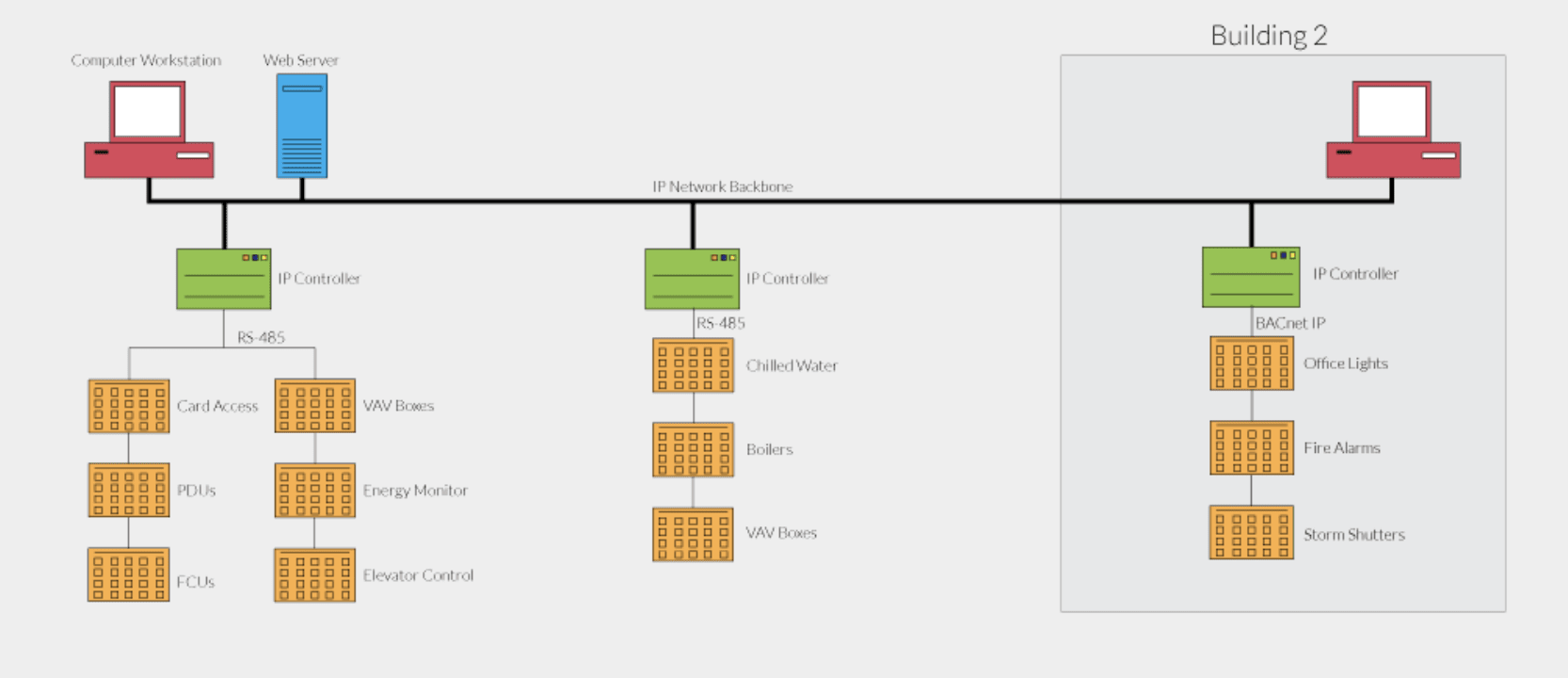Building automation systems are the future of commercial services. But if it sounds like we’re racing toward an intimidating and unfamiliar new world, consider this: building automation has been with us since the first thermostat. For decades, HVAC systems have communicated with clocks and thermometers, and sprinkler systems have talked to fire alarms.
Building automation systems aren’t a departure from the norm; they’re a continuation of a trend. That said, the new wave of building automation does represent a significant leap forward: creating centralized controls for climate, security, fire, and lighting. And it’s growing rapidly. In 2020, the worldwide building automation industry was worth $223 billion; by 2023, McKinsey predicts it will grow to a $273 billion industry.
Many commercial services companies are unsure how to react to the rise of building automation systems and are used to operating within their core area of expertise. But connected buildings are only going to become more ubiquitous, so commercial services teams need to figure out how to account for them or adopt them as a new service they offer customers.
What are Building Automation Systems?
A building automation system (BAS)—sometimes called a building management system (BMS)—is a computerized control system that connects and oversees multiple building systems. At a minimum, BAS encompasses HVAC and major mechanical systems, and many also integrate with lighting. In addition, the most sophisticated building automation systems integrate with security and access control to provide a truly holistic building management solution.
As the name indicates, these automated systems are designed to function with minimal human oversight and to use information from one system to make decisions about the others. For example, if the security system reports that the last employee has clocked out of an office for the evening, the lighting system and HVAC will automatically switch to low-power mode.
In addition to their automated functionalities, modern BAS controls also give building owners and managers a high degree of oversight through a user interface they access via purpose-built hardware or a mobile app. Through this interface, they can monitor system performance, get alerts if there’s a problem, and make manual adjustments.

Simplified example of an integrated building automation system (Source)
Modern building automation systems are made possible by the internet of things (IoT). Technicians place low-power sensors all over a building, which send data back to the central system. BAS uses both analog (variable measurements like temperature, humidity, light) and digital (binary inputs communicating whether a device is on or off) inputs.
There are multiple BAS communication protocols (the standards by which BAS networks operate), some of which are proprietary, while others are open-source. Open-source protocols like BACnet have the advantage of helping building owners avoid vendor lock-in, but advocates of proprietary protocols often claim their systems are more secure.
Benefits of Building Automation
The current generation of building automation systems has been around since the early 2000s, but the trend is spiking in popularity because smart buildings help address some of today’s biggest building management concerns.
Building connectivity helps commercial buildings improve energy efficiency by powering down lighting systems when they’re not in use, adjusting HVAC settings based on occupancy, and optimize overall energy consumption based on data. Saving on building energy also naturally translates to greener buildings and can be part of a company’s push for sustainability.
On top of energy savings, smart buildings are designed to save on maintenance costs because they identify issues before they become emergencies, and their sensors can pinpoint the root cause of a problem. For example, if an HVAC system’s energy consumption suddenly increases, BAS microprocessors can identify whether the culprit is a rooftop unit or an air handler.
BAS can increase occupant comfort by responding to building conditions in real-time. This is a huge advantage if you’ve ever worked in an office where the air conditioning is scheduled by the calendar date, not the current weather conditions, so you get blasted with cold air during a snowstorm. Likewise, BAS can create healthier buildings by monitoring indoor air quality.
Who’s Responsible for Building Automation
Because building automation systems straddle multiple verticals, they redefine building management roles between building owners, BAS developers/operators, and contractors.
Building owners
As with any other major upgrade, it’s up to commercial property owners and facilities managers to make the ultimate call about whether automation is a worthwhile investment capable of delivering long-term cost savings. For now, next generation automation projects make the most sense for large (and deep-pocketed) properties like healthcare centers, school campuses, and office parks. Meanwhile, smaller properties can undertake more modest improvements, closer to the scale of smart houses.
Property owners also need to decide the level of automation they want to embrace and the level of manual control they want to retain over their systems. Controlling building functions from a tablet appeals to some property managers, while others prefer a “set it and forget it” approach.
BAS manufacturers
There are dozens of BAS manufacturers today, some of which are specialized businesses, while others are part of larger automation-focused enterprises. Some BAS manufacturers contract directly with building owners to install and maintain their systems, while others contract work out to commercial services providers. Traditional contractors can train their technicians in the installation of these systems, but that requires sacrificing a certain amount on independence.
Within this field, master systems integrators (MSI) are companies or individuals that work to install and maintain building automation systems but are not responsible for maintenance of the property itself. An MIS typically specializes in the IT aspect of automation and only interfaces with commercial service contractors by programming their contact information into the system.
Commercial services companies
Many nationwide commercial services (and specifically HVAC companies) are also major players and pioneers in building automation. Johnson Controls, Trane, Honeywell, and Comfort Systems USA all have BAS arms. But smaller operations that want to avoid losing business to controls subcontractors can still get in the BAS game.
If you’re a small to midsize company, you can minimize the risk of exploring BAS by having a clear idea of your customer base and the resources it will take (including hiring and training) to get this service off the ground. Aim for modest margins, since customer trust will be your key differentiator in the automation space, so you don’t want to charge exorbitant maintenance fees. Find a trusted control systems manufacturer to partner with, that wants to work with you—not replace you. It’s also crucial to commit to ongoing education so your BAS business stays cutting edge, although you should still be willing to subcontract work that’s outside your area of expertise.
Is 2021 Your Year for BAS? Ask the Data.
For commercial service businesses, choosing when and how to embrace BAS is like a game of poker: you don’t want to risk everything on a bad bet, but at some point, you’ll have to get in the game. On one hand, it’s a gamble to invest in the training and technology to operate a BAS unit. But on the other hand, it’s a risk to ignore building automation and hope smart buildings will still need your services. (The risk is you cut yourself out of a relationship with your customers and turn over maintenance decisions to an algorithm.)
The problem is many commercial services teams (to stick with the poker analogy) don’t even know the strength of their own hand. After all, it takes accurate information to plot the best course for your business. Is your local market big enough to support a BAS initiative? Can you compete for the kind of large-scale projects that would provide a quick ROI? Which of your current customers is due for a “smart building” retrofit? These are questions most commercial services sales teams aren’t equipped to answer.
But the answers exist, and just like technology revolutionizing commercial property maintenance, it’s also revolutionizing the sales process. Our software, Atlas, lets commercial services teams take an accurate look at their market penetration, sales pipeline, and the activities of their competitors. Armed with that kind of information, your company can explore BAS on your terms.
Share





